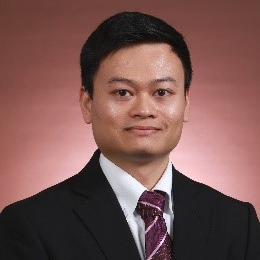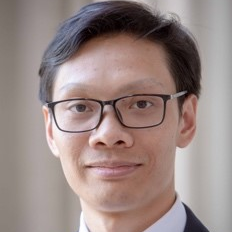Sustainable Technologies and Developments for Future Energy Systems
A special issue of Sustainability (ISSN 2071-1050). This special issue belongs to the section "Energy Sustainability".
Deadline for manuscript submissions: closed (30 June 2023) | Viewed by 36648
Special Issue Editors
Interests: low-carbon; decentralized and autonous energy systems; smart grid; network systems; artificial intelligence; optimization; control systems
Special Issues, Collections and Topics in MDPI journals
Interests: digital twinning; AI & machine learning applications in complex physical systems; electric power system analysis, optimization, operation, and control; security and stability assessment; emergency control for preventing blackouts; nonlinear dynamical systems; renewables integration
2. Department of Architectural Engineering, Penn State University Park, PA 16802, USA
Interests: smart grid optimization; cybersecurity of cyber–physical power systems; microgrids operation and control
Special Issues, Collections and Topics in MDPI journals
Special Issue Information
Dear Colleagues,
Recent paradigm shifts have posed grand challenges to energy systems and have significantly changed their structures, operation and management. One of such major challenges is an urgent call for the decarbonization of energy systems, leading to extensive efforts towards the massive integration of renewable energy sources, the electrification of related infrastructures and industry sectors, and so on. The high-level penetration of renewables naturally introduces a great deal of intermittency and uncertainties that may compromise the reliable operation of the power grids. Another challenge is the structure of energy systems, which have been becoming increasingly complex with their intensified interdependency with other critical infrastructures, such as communication, transportation, gas systems, and the unprecedented level of integration of non-traditional components, including intermittent renewable resources, electric vehicles, electronic-based devices, and information data centers. Economic feasibility is also a bottleneck for implementing many interesting and promising technologies in realistic energy systems. Above all, the recent COVID-19 pandemic unexpectedly altered human living and working conditions, and upturned globalization and worldwide urbanization. The pandemic creates a new normal for society and economics, as well as energy demands and supply patterns. Energy system planning and management therefore need to consider such pandemic-induced changes.
At the same time, many innovative technologies and systems have been developed for tackling those challenges and deriving clean, efficient, smart, and resilient energy systems. Examples include artificial intelligence (AI), Internet of Things (IoT), smart devices and services, distributed ledger technologies (DLTs), etc., to name a few. Therefore, to cope with the aforementioned environmental, societal, and economic challenges of energy systems, while exploring the opportunities of recent advances in science and technology, this Special Issue aims to serve as a platform for energy researchers to present their recent works that contribute to deriving sustainable future energy systems. Both theoretical and practical research on technologies, analysis, and designs, which address the sustainability, complexity, efficiency, and resiliency of future energy systems, are welcome. Special attention will be given to studies on emerging technologies, such as machine learning and artificial intelligence, distributed ledger technologies, etc., for solving emergent challenges on the cybersecurity and resilience of energy systems under cyberattacks and natural disasters, which have not been accounted for in other Special Issues.
Prof. Dr. Dinh Hoa Nguyen
Prof. Dr. Hung Dinh Nguyen
Prof. Dr. Javad Khazaei
Guest Editors
Manuscript Submission Information
Manuscripts should be submitted online at www.mdpi.com by registering and logging in to this website. Once you are registered, click here to go to the submission form. Manuscripts can be submitted until the deadline. All submissions that pass pre-check are peer-reviewed. Accepted papers will be published continuously in the journal (as soon as accepted) and will be listed together on the special issue website. Research articles, review articles as well as short communications are invited. For planned papers, a title and short abstract (about 100 words) can be sent to the Editorial Office for announcement on this website.
Submitted manuscripts should not have been published previously, nor be under consideration for publication elsewhere (except conference proceedings papers). All manuscripts are thoroughly refereed through a single-blind peer-review process. A guide for authors and other relevant information for submission of manuscripts is available on the Instructions for Authors page. Sustainability is an international peer-reviewed open access semimonthly journal published by MDPI.
Please visit the Instructions for Authors page before submitting a manuscript. The Article Processing Charge (APC) for publication in this open access journal is 2400 CHF (Swiss Francs). Submitted papers should be well formatted and use good English. Authors may use MDPI's English editing service prior to publication or during author revisions.
Keywords
- energy sustainability
- energy security featuring pandemic responses
- modeling and detection of cyberattacks
- machine learning and artificial intelligence for energy systems
- distributed ledger technologies for energy systems
- renewable and distributed energy resources
- carbon capture, storage and utilization considering urban metabolism
- emerging energy technologies towards sustainability
- energy efficiency
- multi-energy systems (energy-transportation and power–thermal nexus)
- energy systems modeling, optimization, and control (digital twining and IoT applications)
- information and communication technologies for energy systems
Benefits of Publishing in a Special Issue
- Ease of navigation: Grouping papers by topic helps scholars navigate broad scope journals more efficiently.
- Greater discoverability: Special Issues support the reach and impact of scientific research. Articles in Special Issues are more discoverable and cited more frequently.
- Expansion of research network: Special Issues facilitate connections among authors, fostering scientific collaborations.
- External promotion: Articles in Special Issues are often promoted through the journal's social media, increasing their visibility.
- Reprint: MDPI Books provides the opportunity to republish successful Special Issues in book format, both online and in print.
Further information on MDPI's Special Issue policies can be found here.







